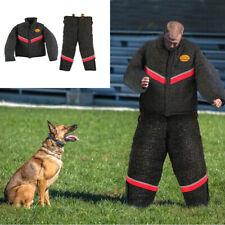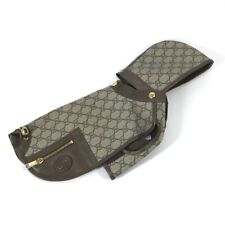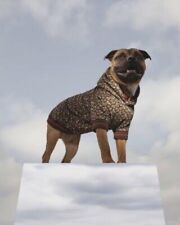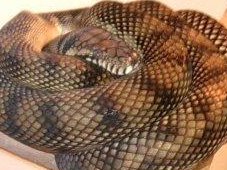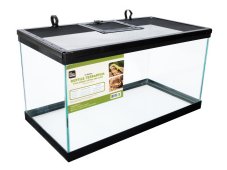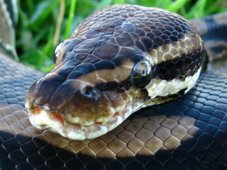Health of Corn Snakes

Healthy corn snakes will be active and alert, with clear eyes, nose and mouth, although the eyes can become cloudy at shedding time. The skin should also appear healthy, and its body rounded and full. Wrinkled skin, persistent vomiting, lethargy and a diminished appetite are all signs of ill health to watch for. There shouldn’t be any discharge in your corn snake’s mouth or nose, nor should its feces or urine appear abnormal. If your corn snake displays any of these symptoms, seek help from a veterinarian specializing in exotic pets.
Wash your hands before and after you touch your pet or its habitat, to stop the spread of infectious diseases like salmonella. You also need to change water, remove droppings and thoroughly clean your snake’s tank regularly to keep it hygienic and healthy.
Mites & Ticks
Mites are common parasites found in corn snakes, and they live under scales or in eye rims. They suck on the host’s blood, making it anemic, and also carry diseases, so must be dealt with quickly, especially since they reproduce swiftly. It’s easy to tell if your corn snake has mites, because of their silvery droppings. If your pet has mites, soak it in a covered, shallow container for a few hours and clean and disinfect your creature’s home, and everything in it. Dry your snake thoroughly afterwards.
Ticks are larger, and are found between a corn snake’s scales. Remove them by swabbing with some rubbing alcohol, then tweak out with tweezers. Most mites and ticks can be kept at bay if you disinfect rocks, branches and other naturally occurring objects before adding to the enclosure.
Shedding Difficulties
Dysecdysis describes various shedding difficulties. It occurs when a snake tries to shed but still has old skin on its body, or eyes. This skin hardens, disturbing future shedding cycles. Eventually, the layers of retained skin will make your corn snake virtually blind. When your snake sheds, examine it to ensure all the old skin has gone, especially around the eyes. Remove any retained skin by swabbing the eye with a cotton swab dipped in warm water. Then, pluck at the edge of the skin with tweezers until it comes away.
Other Health Concerns
Mouth rot in corn snake occurs when throat and lungs become infected by fungi or bacteria. Red, inflamed gums, persistent opening of the mouth and a white discharge inside the mouth are all possible symptoms. If this happens to your corn snake, take him to the veterinarian as soon as you can.
Pneumonia is one of the most dangerous problems for a corn snake. This respiratory tract infection can be lethal as corn snakes have just one working lung. Heavy breathing, hissing, repeated opening of the mouth and excessive saliva or mucus can all be symptoms. Seek professional help immediately if you think your corn snake could have pneumonia.
Blister disease occurs when a snake isn’t housed correctly, or if humidity is too high. It’s caused by bacteria, and the scales on your snake’s belly will turn brown or yellow, and your pet will also develop a series of yellow or white bumps. Unless it is treated, your snake may not be able to recover. While a very thorough tank cleaning should sort out this problem, if it doesn’t clear up, see your veterinarian.







